Hexagonal Concrete Dumbbells From 3D Printed Molds
6586 Views, 10 Favorites, 0 Comments
Hexagonal Concrete Dumbbells From 3D Printed Molds
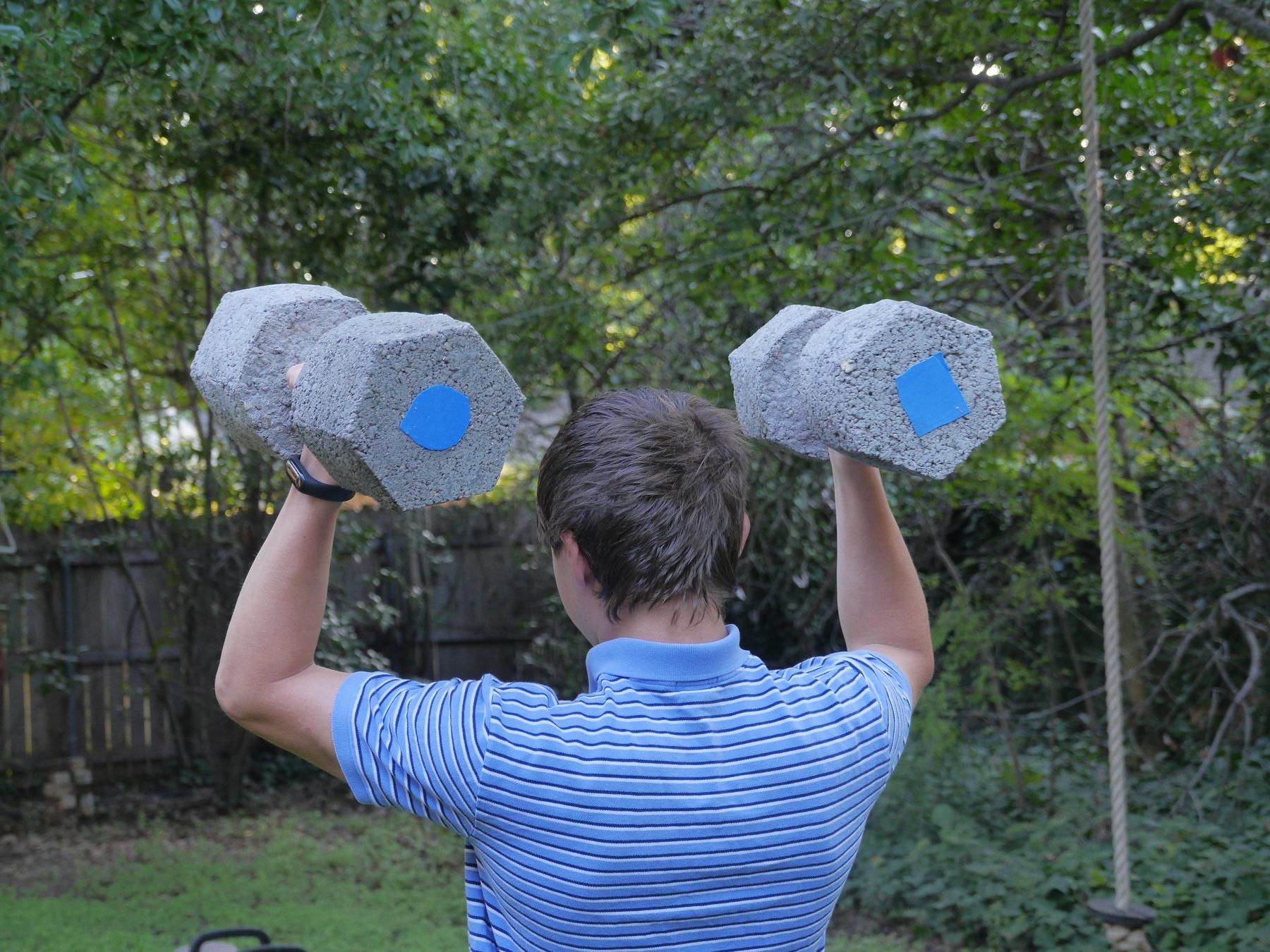
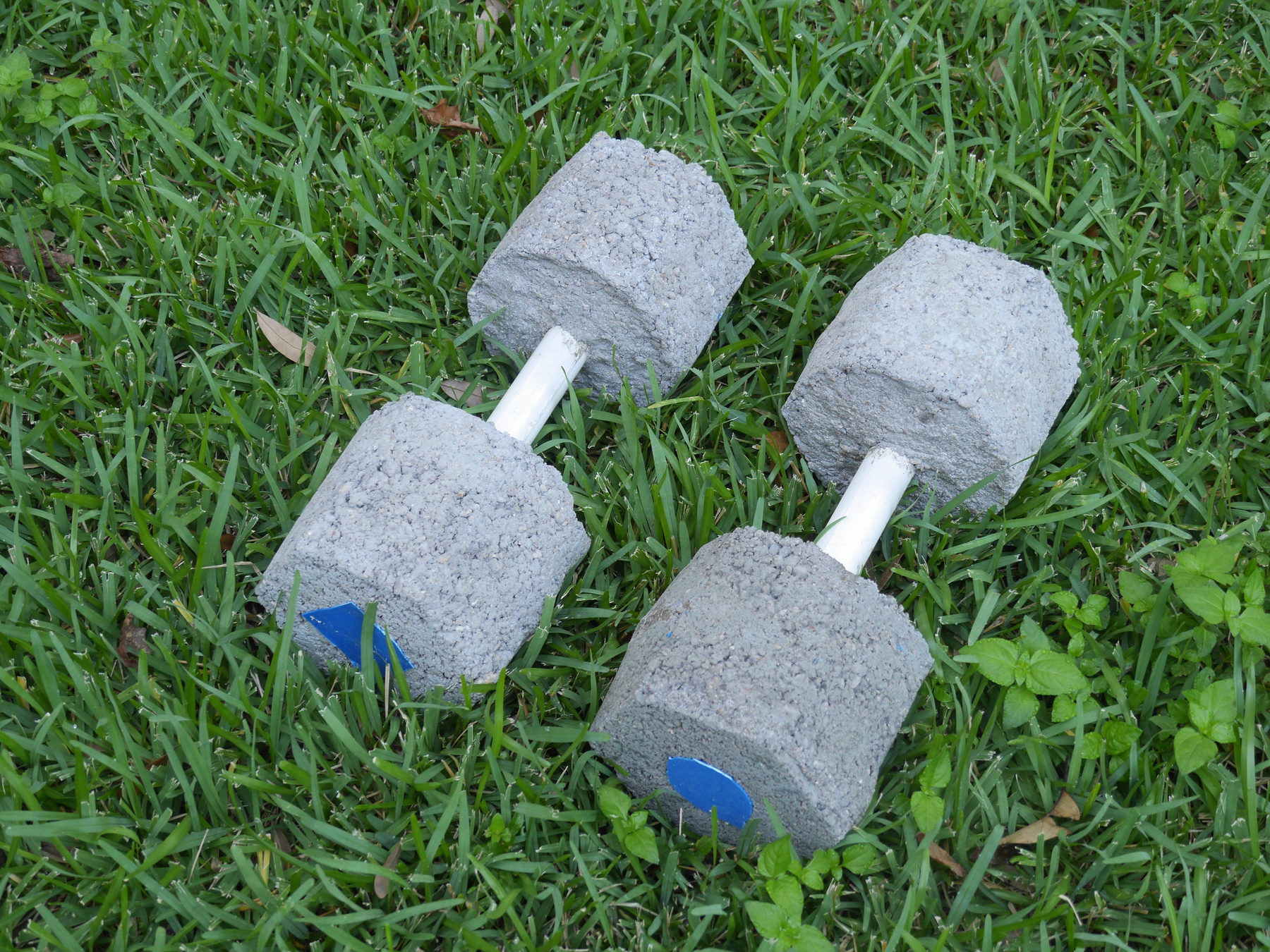
With stores out of weights and my son not in his school workouts, I made 25lb concrete hexagonal dumbbells for him, inspired by various things around the web. This is definitely a work in progress: this is the first time I've made anything from concrete.
I used 3D printable molds. I was originally hoping to use them to have plastic encased weights, but I made the walls too thin for that, so they ripped and peeled. If I was doing it again, I would consider re-usable wooden molds.
Concrete weights will be 50% larger in each dimension than steel weights of the same weight. As a result, you will look stronger when lifting (besides looking like a Flintstones character).
Safety instructions: Inspect for cracks in concrete and wood before each use and do not hold weights directly over the head!
Supplies
- concrete mix
- filament
- water
- hardwood closet rod (or hardwood dowel) about 1.25" or thicker
- 24 wood screws, about 2-3 inch
- duct tape
Customize and Print Molds
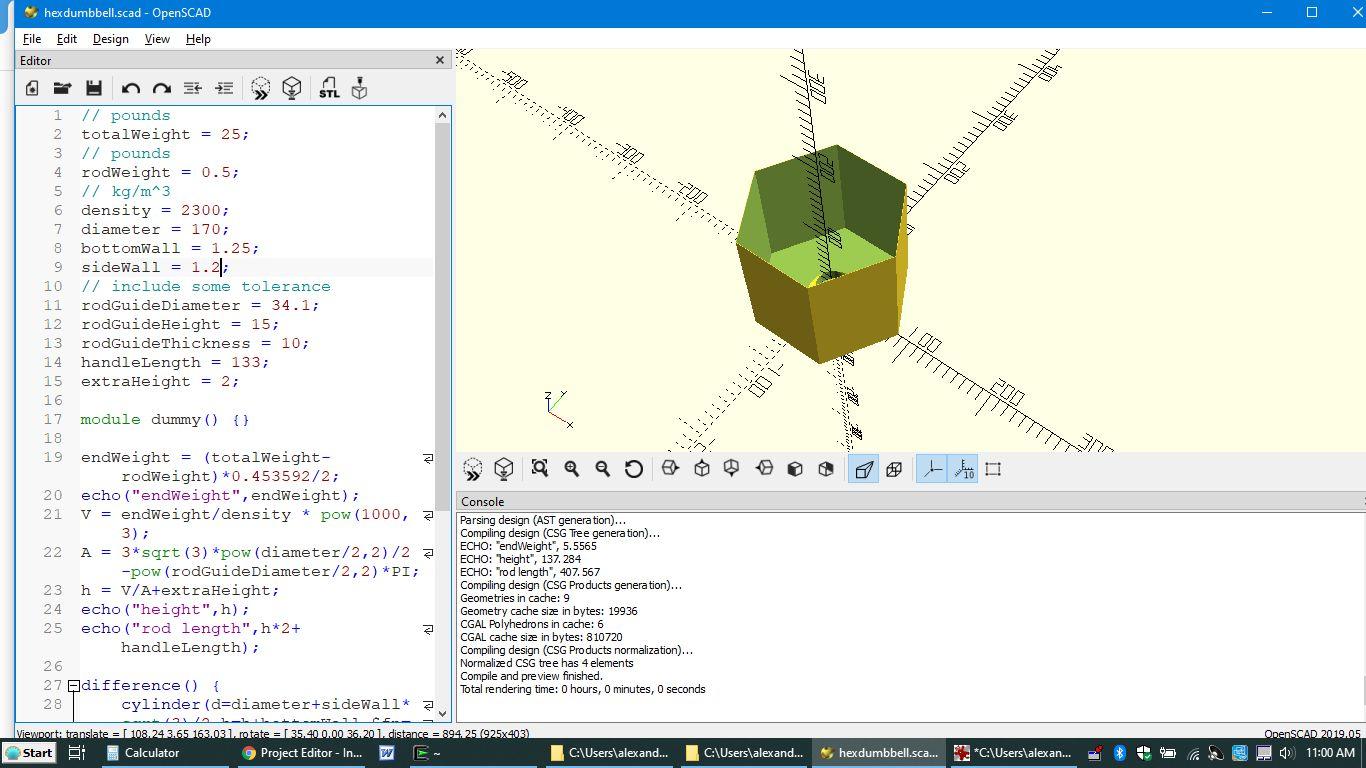
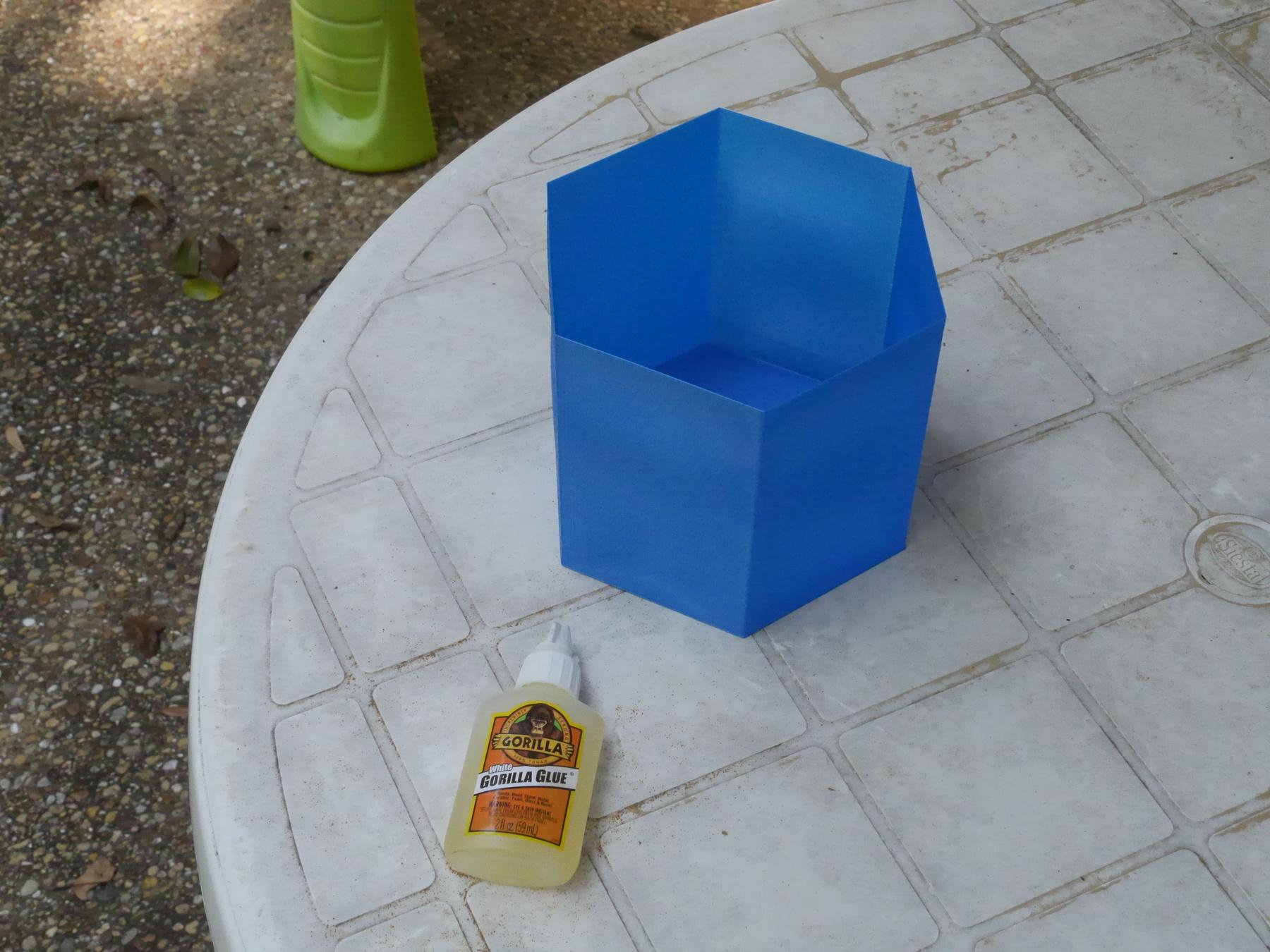
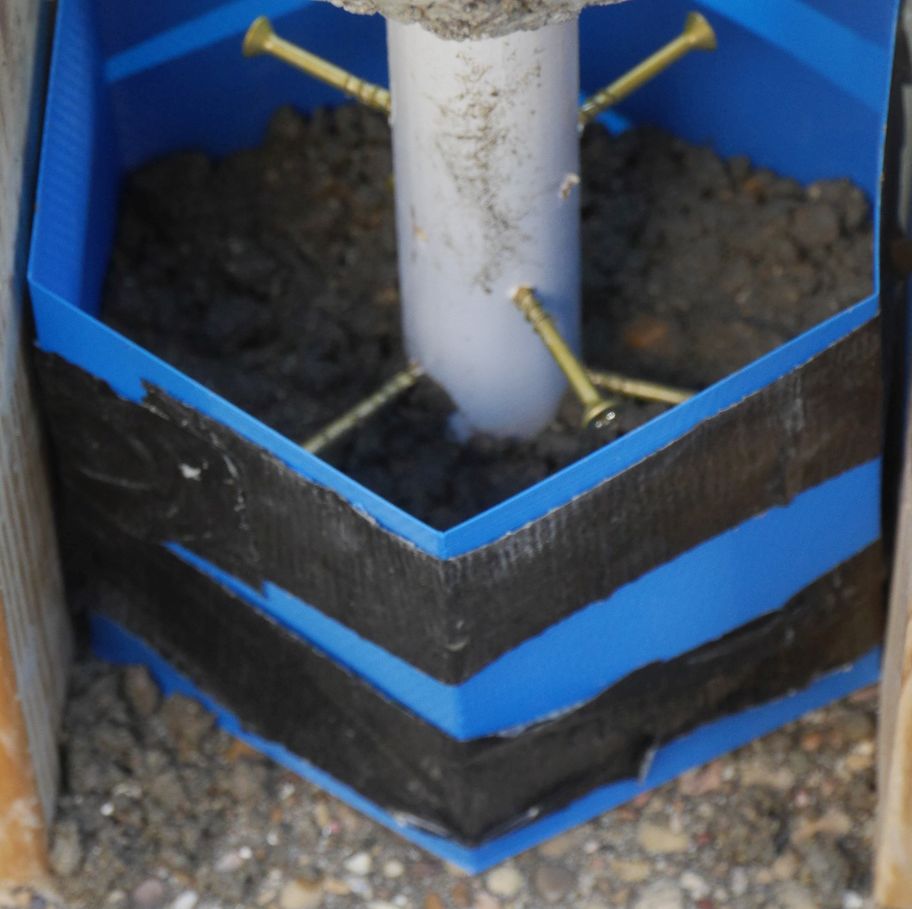
If you want to use 25 lb weights with a 33mm (or so) rod, you can use my STL files for the molds. Otherwise, you will have to change parameters.
Install OpenSCAD. Load my hexdumbbell.scad file into OpenSCAD. Fill out the weight of the dumbbell in pounds in the totalWeight line, and in the rodGuideDiameter put in the diameter of the rod you will use, with a little bit of extra tolerance added.
You will have to decide on the shape, based on what your 3D printer's print volume. Concrete weights are larger than steel, so the shapes will be awkward. My printer handles 200x200x197 mm. I chose a diameter of 170 mm (that's the distance from opposite corners of the hexagon). The OpenSCAD code then automatically calculates a height (based on an estimate of the density of concrete). You need to make sure it all fits in your print volume. Start with a diameter value (in mm) close to your maximum horizontal print volume, and press F5 (preview). In the display window you will see height value. Make sure that fits in your printer. If not, you will need to reduce weight, or increase diameter (if you can), etc. Also, if you don't like the shape--maybe you want the dumbbells more elongated or fatter--you can tweak diameter.
If you want to encase in plastic, change the bottomWall and sideWall parameters to something that won't crack. (Note that the code is not smart enough to take into account the weight of the plastic in calculating the volume.) But one safety concern I have with plastic encasement and concrete weights is that the encasement makes it impossible to inspect the concrete for cracks.
You will now want to edit handleLength. This is the length of the rod between the two dumbbells (in mm), and it should fit your hand comfortable, without your arm bumping into rough concrete. Press F5 (preview) again. Note the rod length output. Cut a rod of this length. Weigh it together with 12 long (2.5-3 inch at least) screws. Now input the weight (in pounds) in the rodWeight line. This will probably be close to the default half a pound, but not quite, so some measurements will change, but I don't think you need to worry about that. The code uses rodWeight to adjust the dimensions to take into account the difference in weight between the rod and the concrete.
Now press F6 (render). Then press the STL button to generate an STL file and print it. I used PLA. I suggest using ABS if you want to keep the plastic on to make it less brittle and PLA if you want to peel it.
Once you've printed it, wrap duct tape straps around the mold for added strength.
Prepare Bar
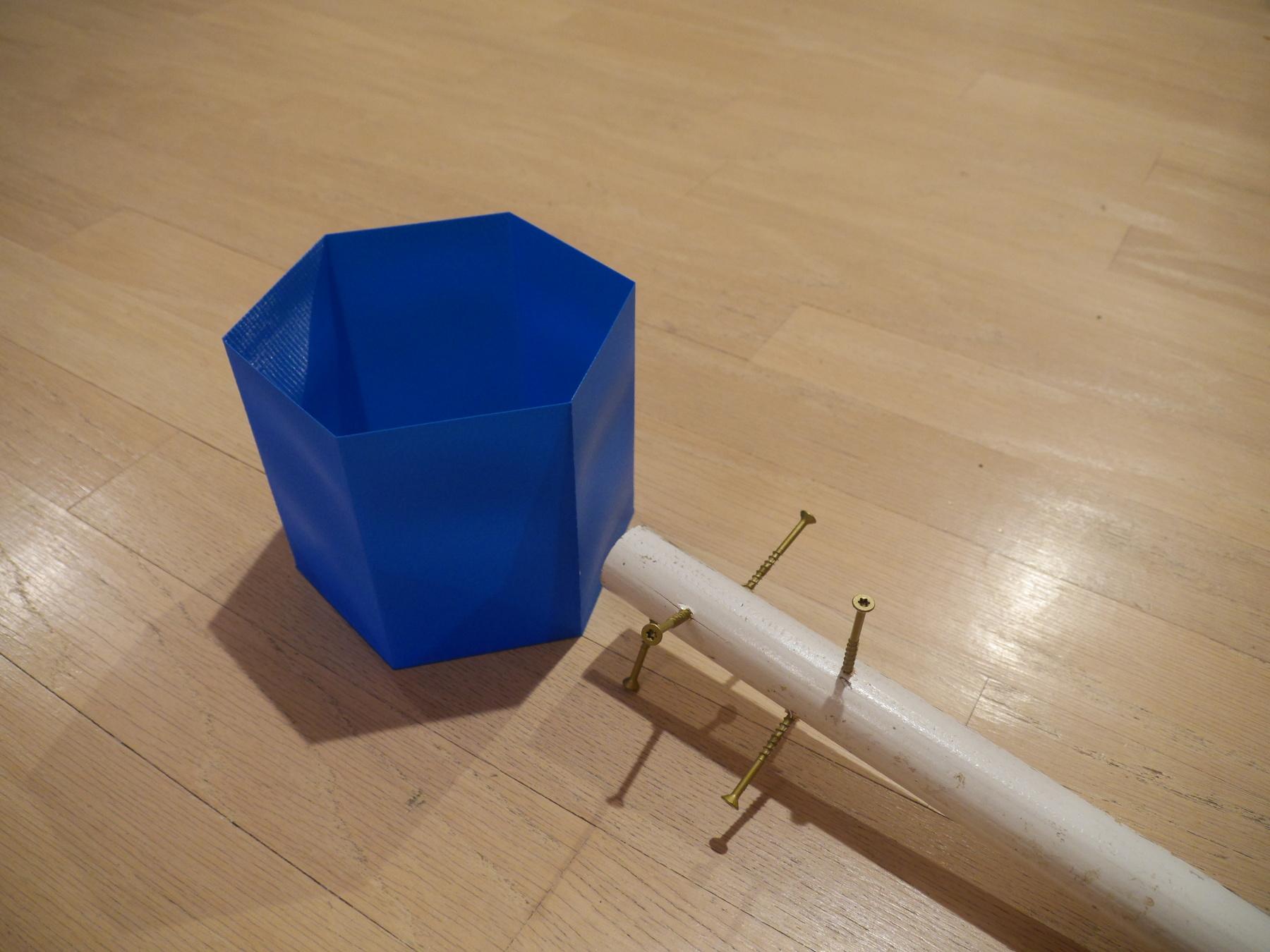
Put six screws into each end of the rod, securely anchored sticking out a fair amount (about 1.5-2 inches), spread out throughout the size of the weight. These will help keep the concrete from sliding off the rod.
Glue the bar into the first mold's guide hole. I wasn't able in the end to detach the part of the mold where I glued it. Perhaps if I used hot glue, I would have, but I used Gorilla Glue. Not a biggie: the plastic ends are a nice place to write down the weight.
Prepare Concrete
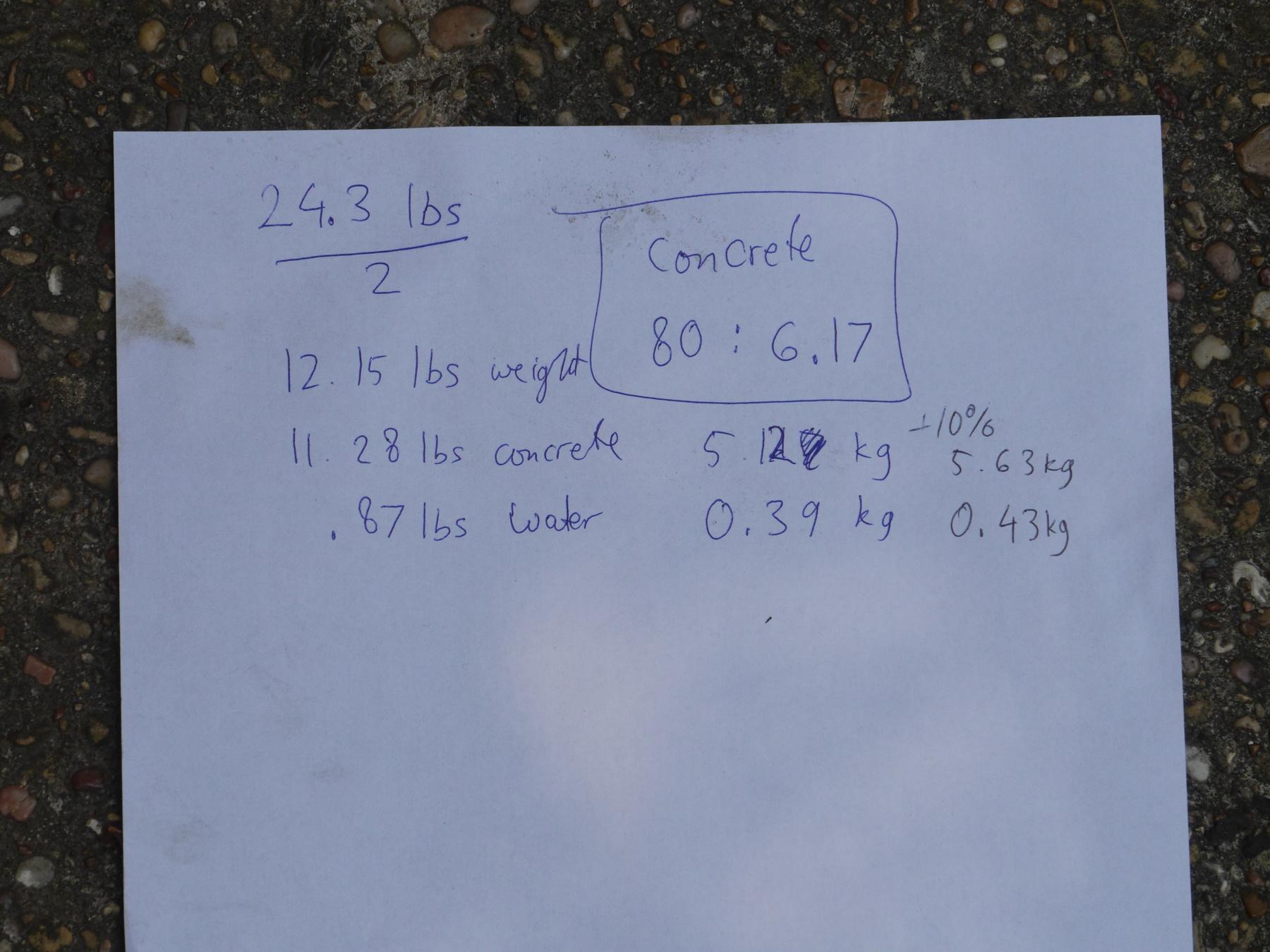
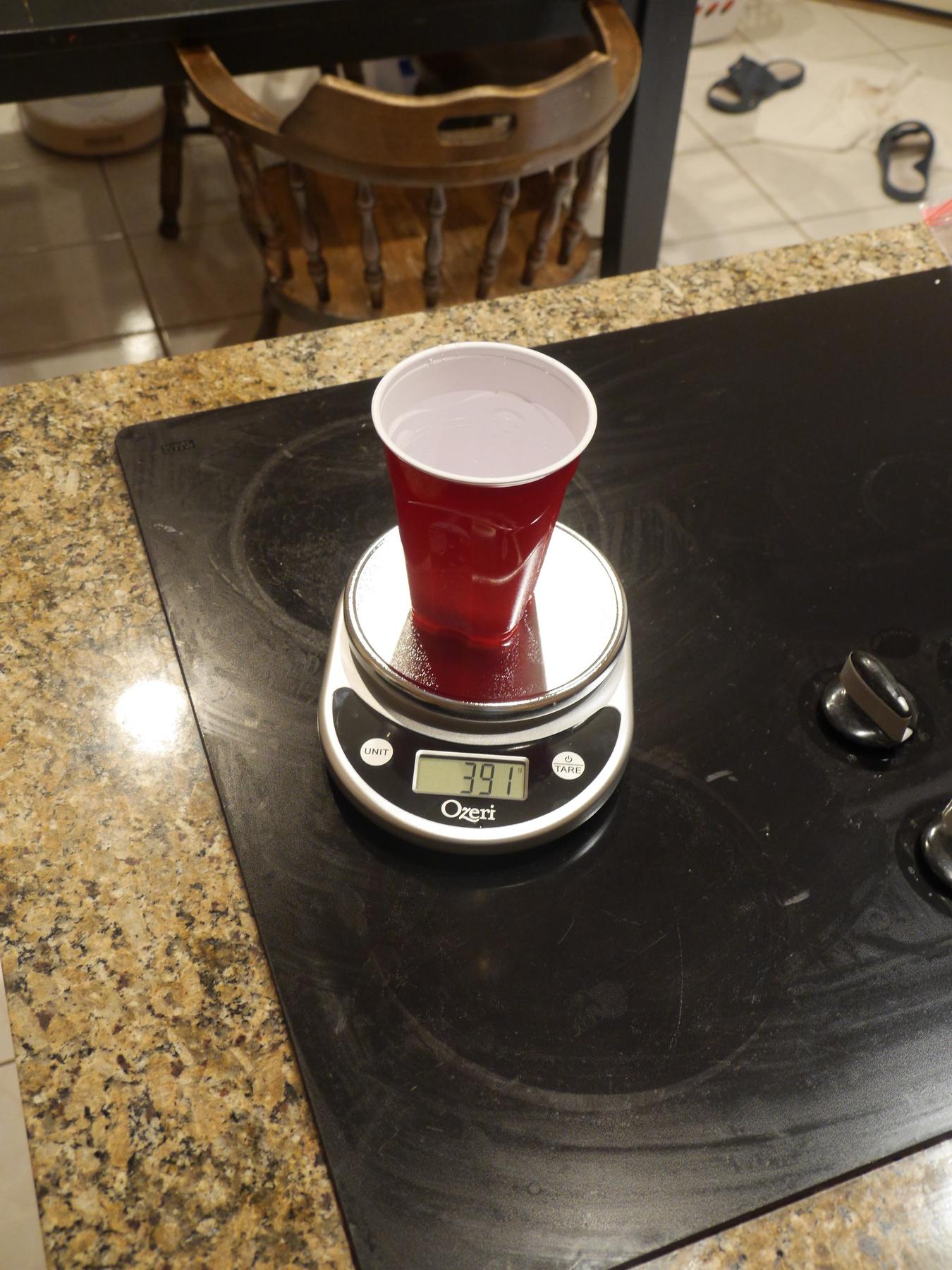
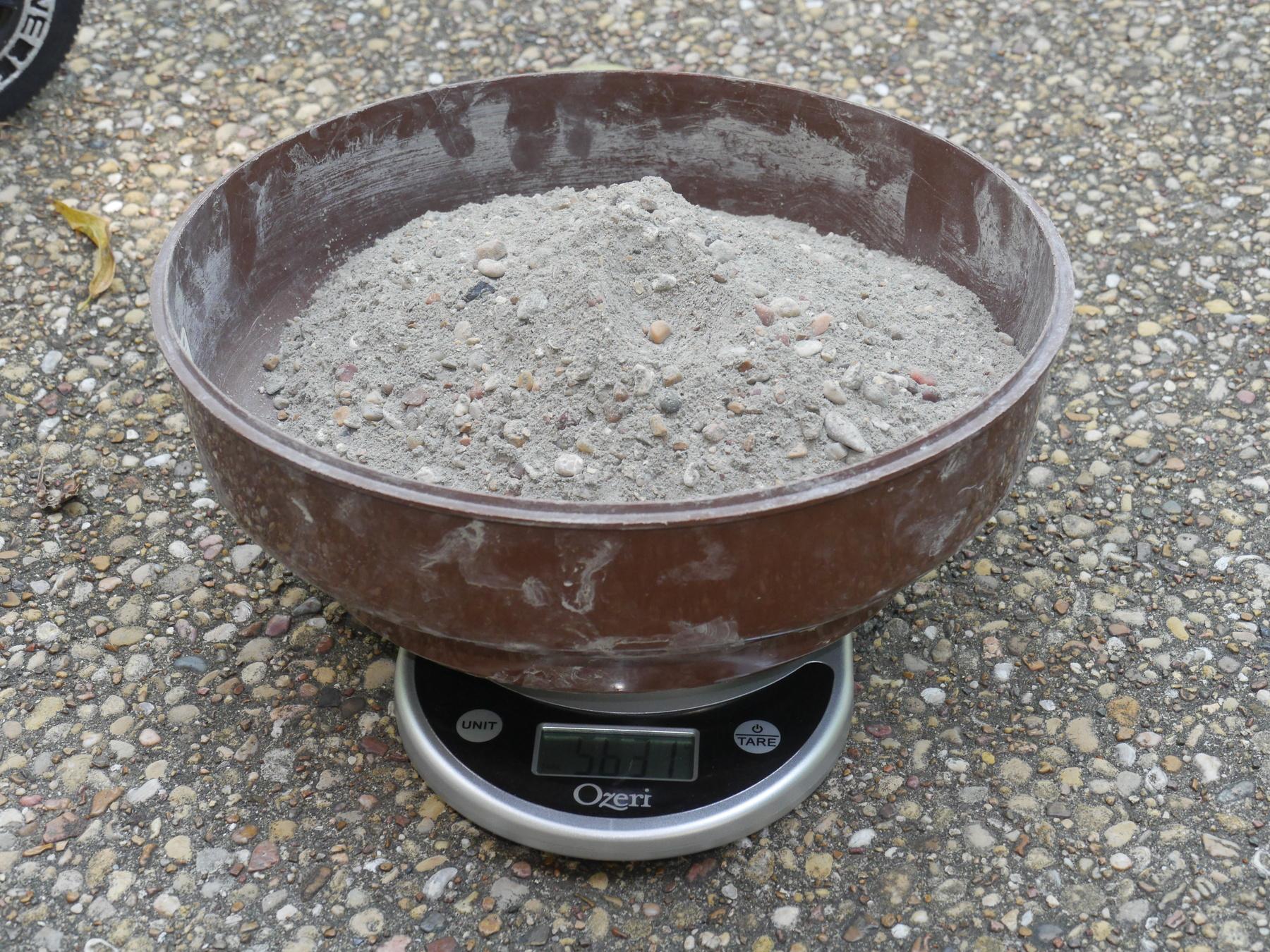
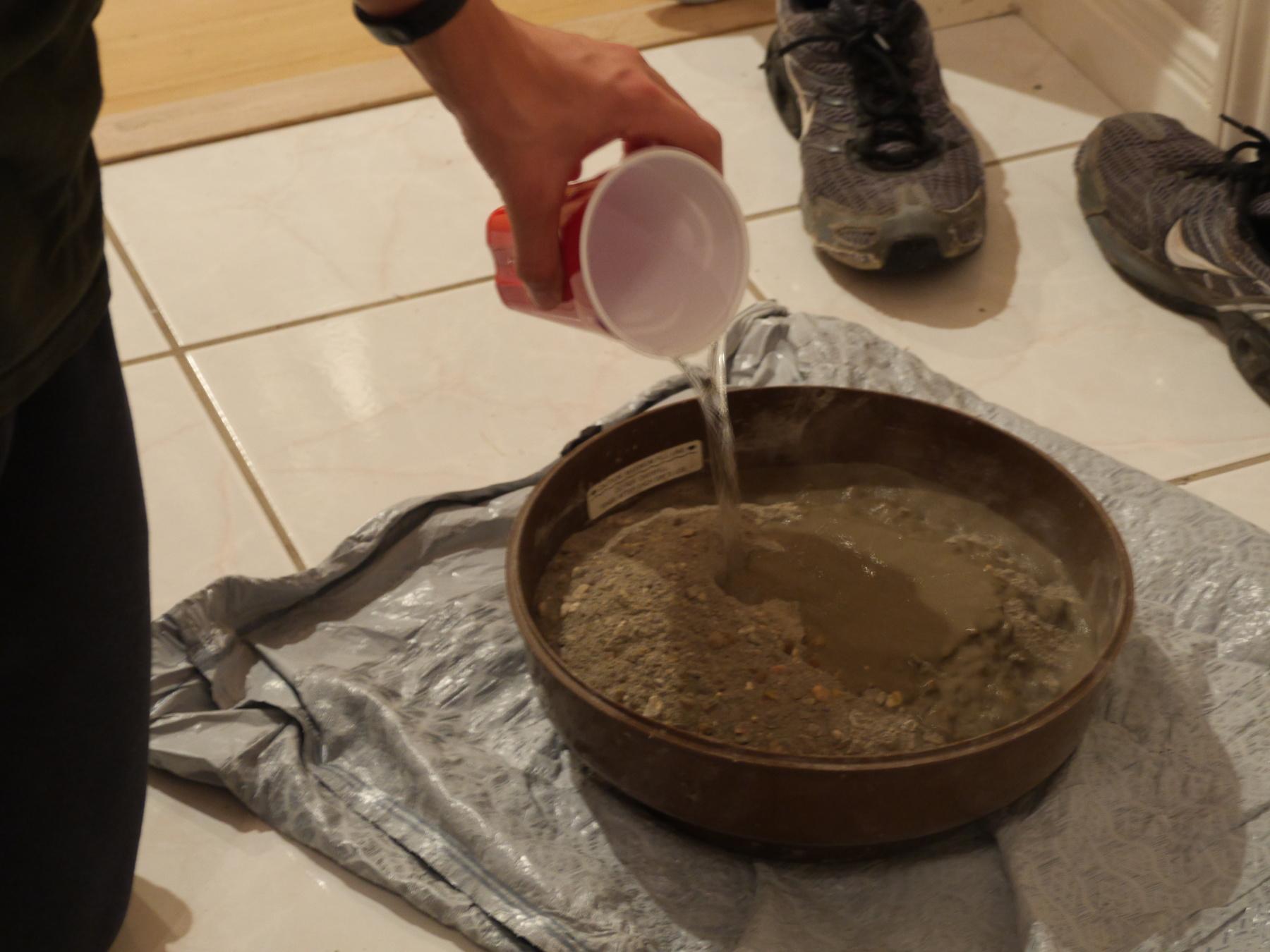
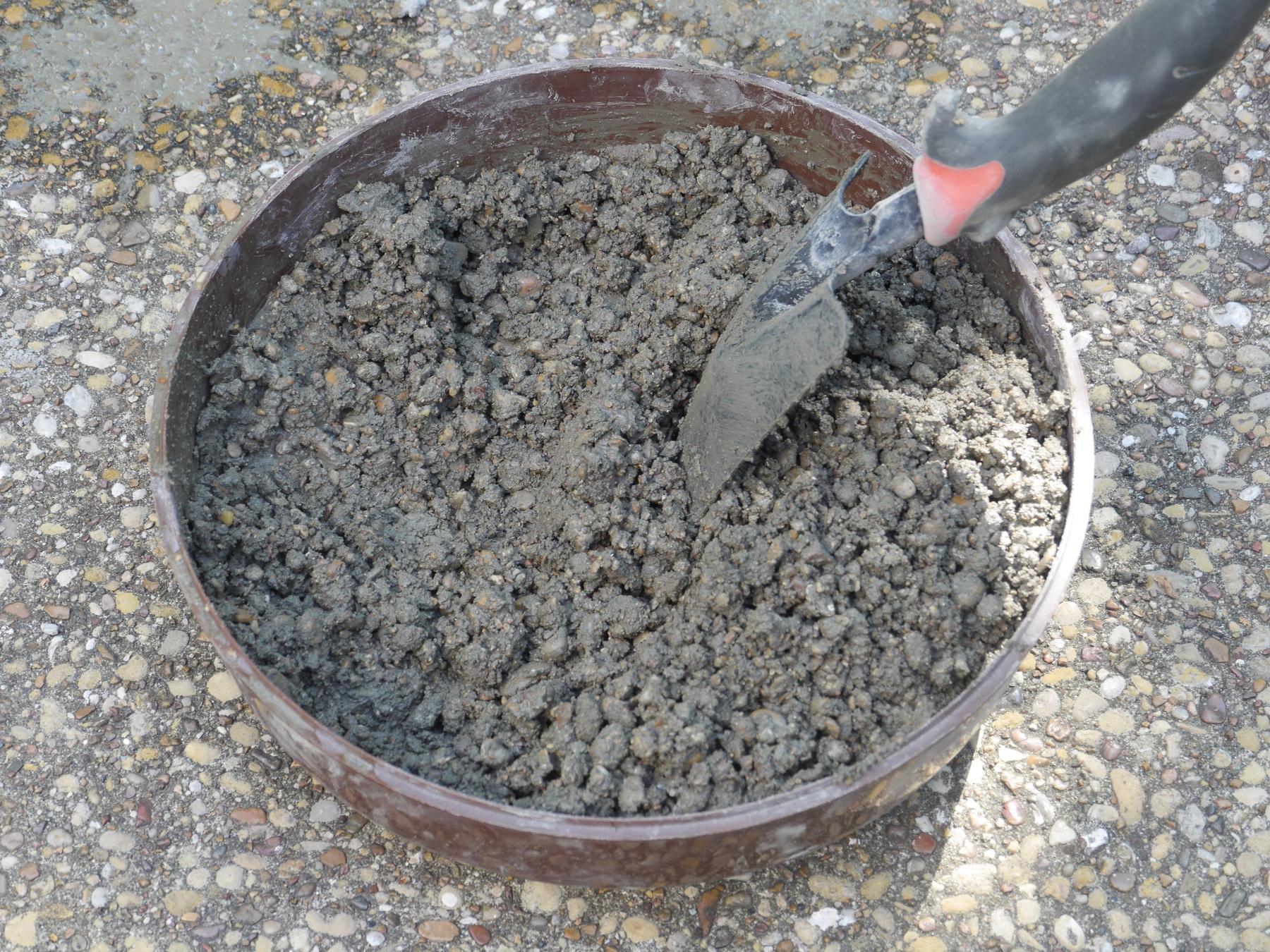
Choose a concrete that isn't too gravelly. (We used something that was too gravely: Quikcrete ProFinish 5000. It was hard to mix, and the output was very rough. It still works.) Read the instructions on it to find out the ratio of concrete mix to water by weight. (Remember that a liter of water weighs a kilogram.)
Calculate the desired final weight of concrete for each end of the dumbbell by taking the total weight of the dumbbell, subtracting the weight of the rod, and dividing by two. Add about 10% to take into account spillage and water evaporation. Then split this in the correct ratio between concrete mix and water.
Your numbers will be different from mine. Here is an example calculation close to the one I did.
Total weight: 25 lb
Rod: 0.5 lb
Each end weight: (25-0.5)/2 = 12.25 lb
Add 10% extra: 13.48 lb = 6.11 kg
Mix instructions on 80 lb bag of concrete say to add 2.8 L of water. So the ratio is 36.3/(36.3+2.8)=0.928 concrete to 1-0.928 = 0.072 water.
Thus each end gets 0.928 * 6.11 kg = 5.67 kg of concrete and 0.072 * 6.11 kg = 0.440 kg of water.
Weigh out the ingredients. I mixed them like I would mix muffin batter, with a little spade, while wearing a KN95 respirator and nitrile gloves. I took care to look for dry patches at the bottom and on the sides.
Mold and Demold
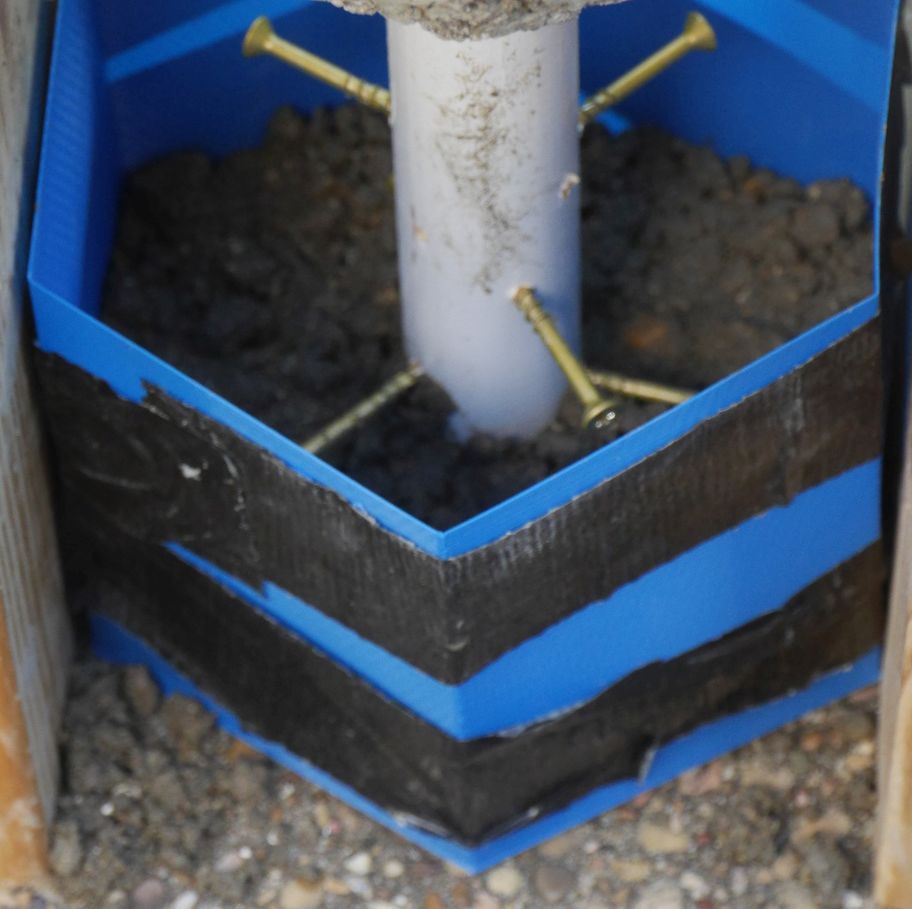
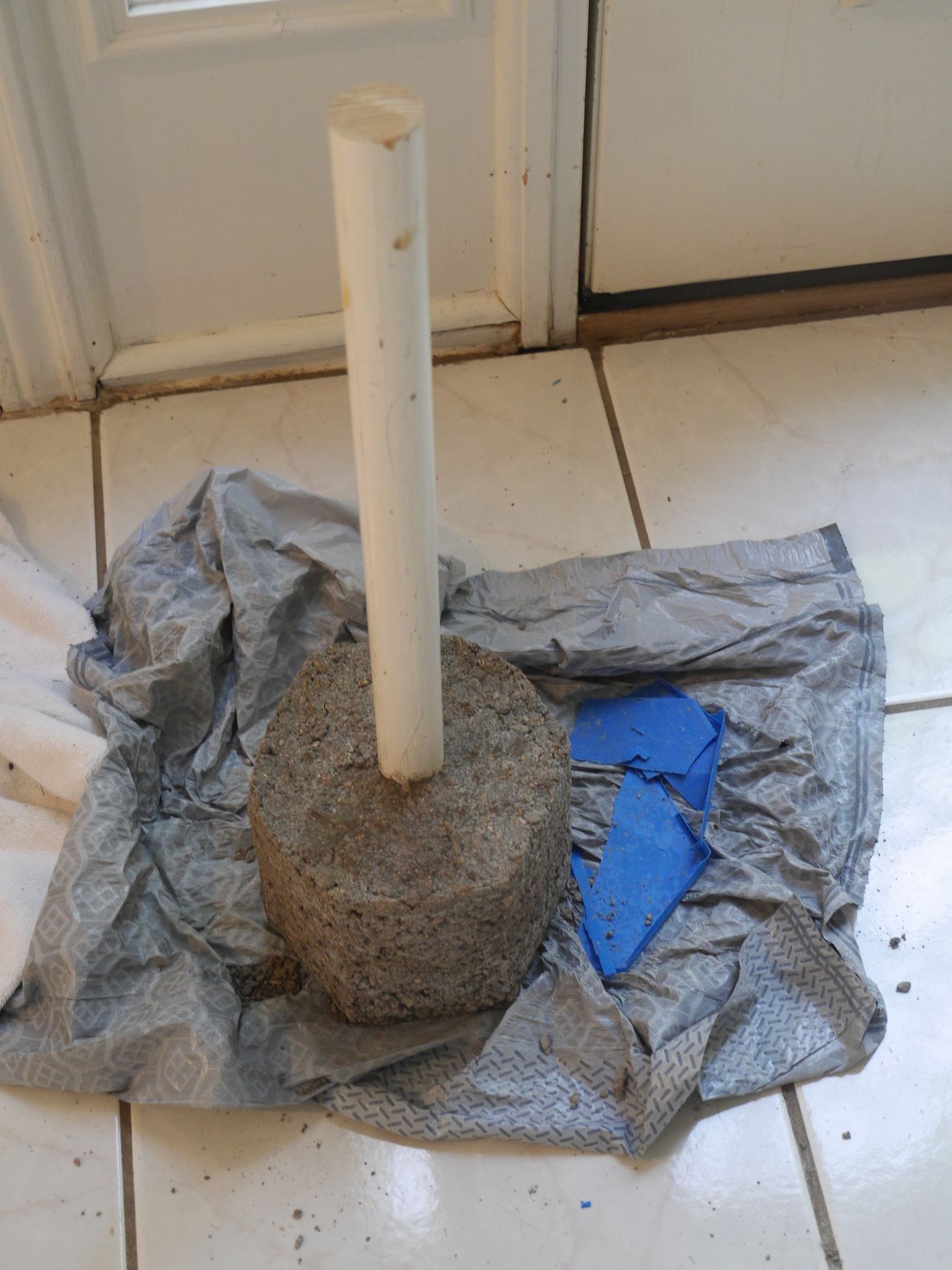
Spoon or pour (depending on viscosity) the mix into the mold. Squish it down every so often if your mix is as gravelly as mine was. I pressed it down hard with glove-covered hands (be careful: cement is caustic).
Leave to set until solid. See instructions on your concrete mix. Twelve hours worked for me.
If you are not making plastic-encased weights, peel off the plastic mold, which will probably have cracked a lot.
Second Weight
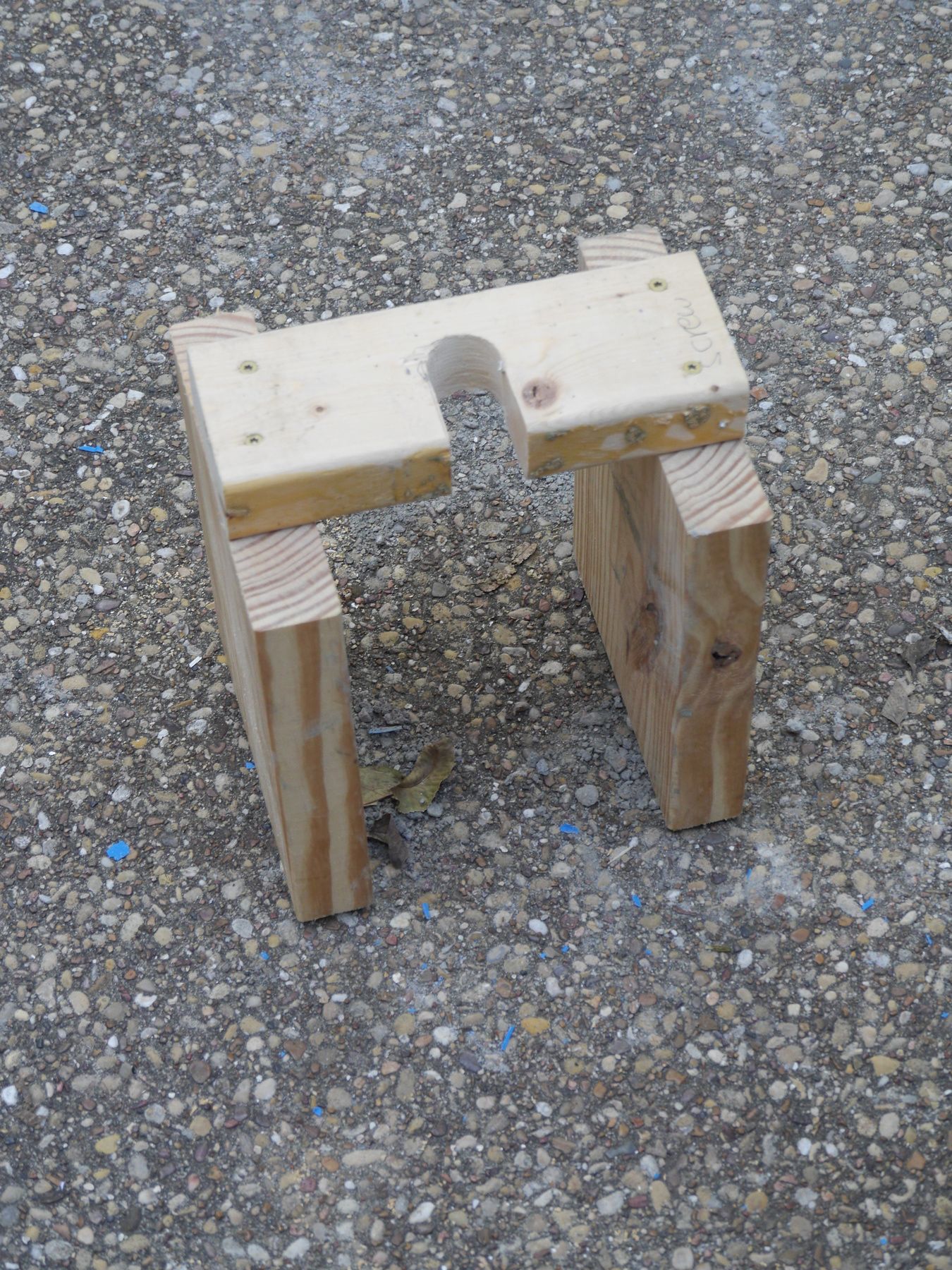
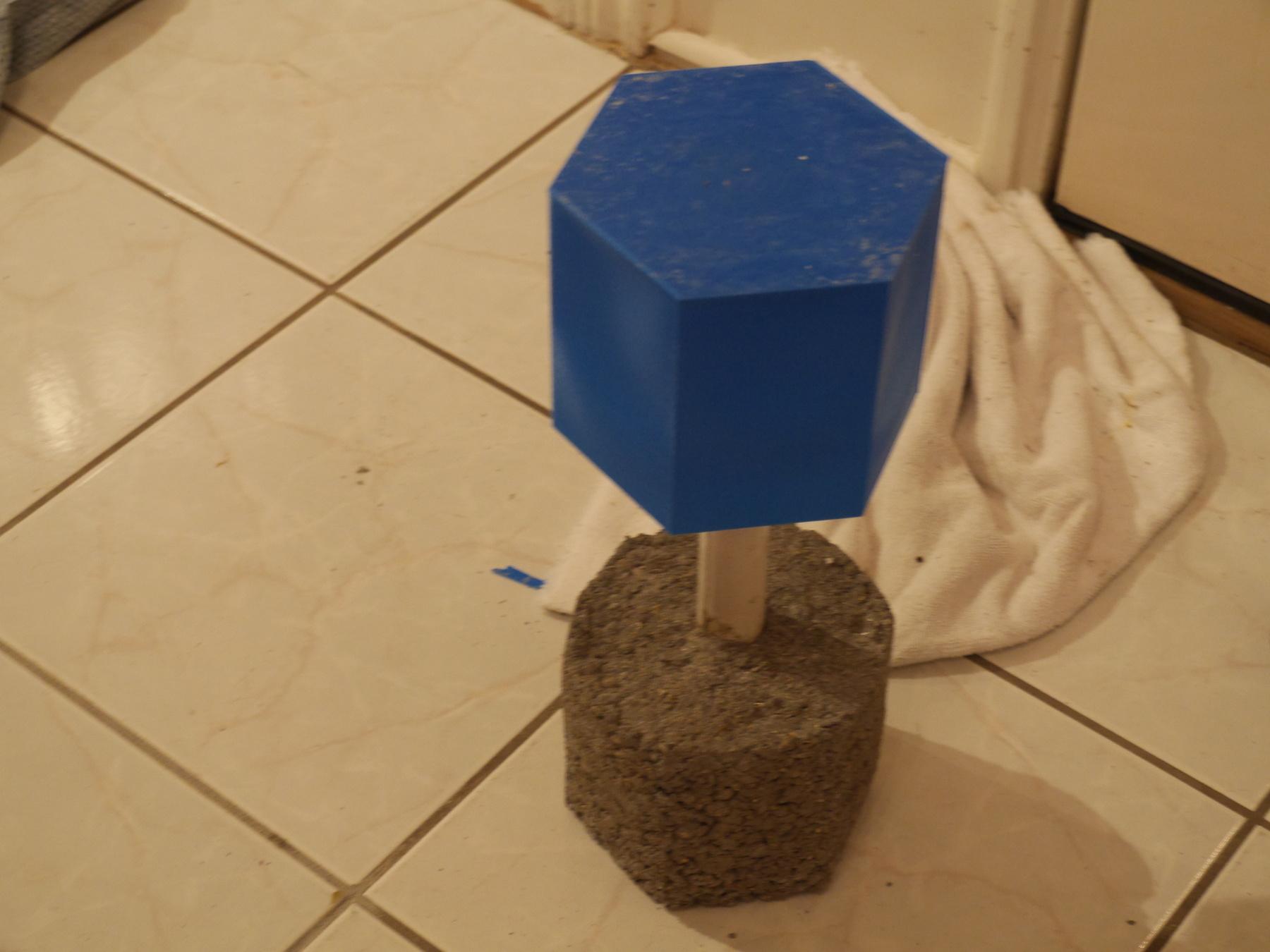
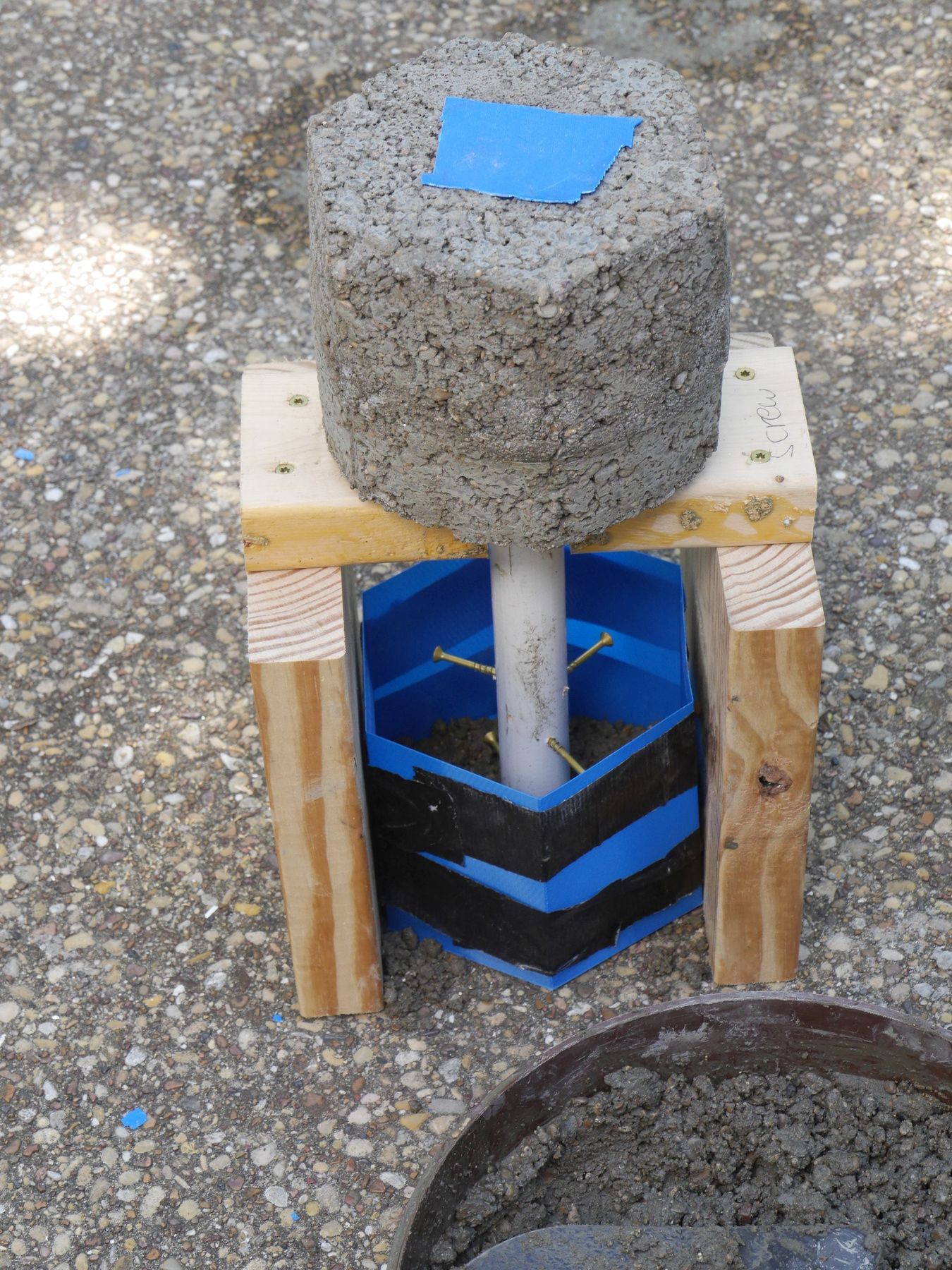
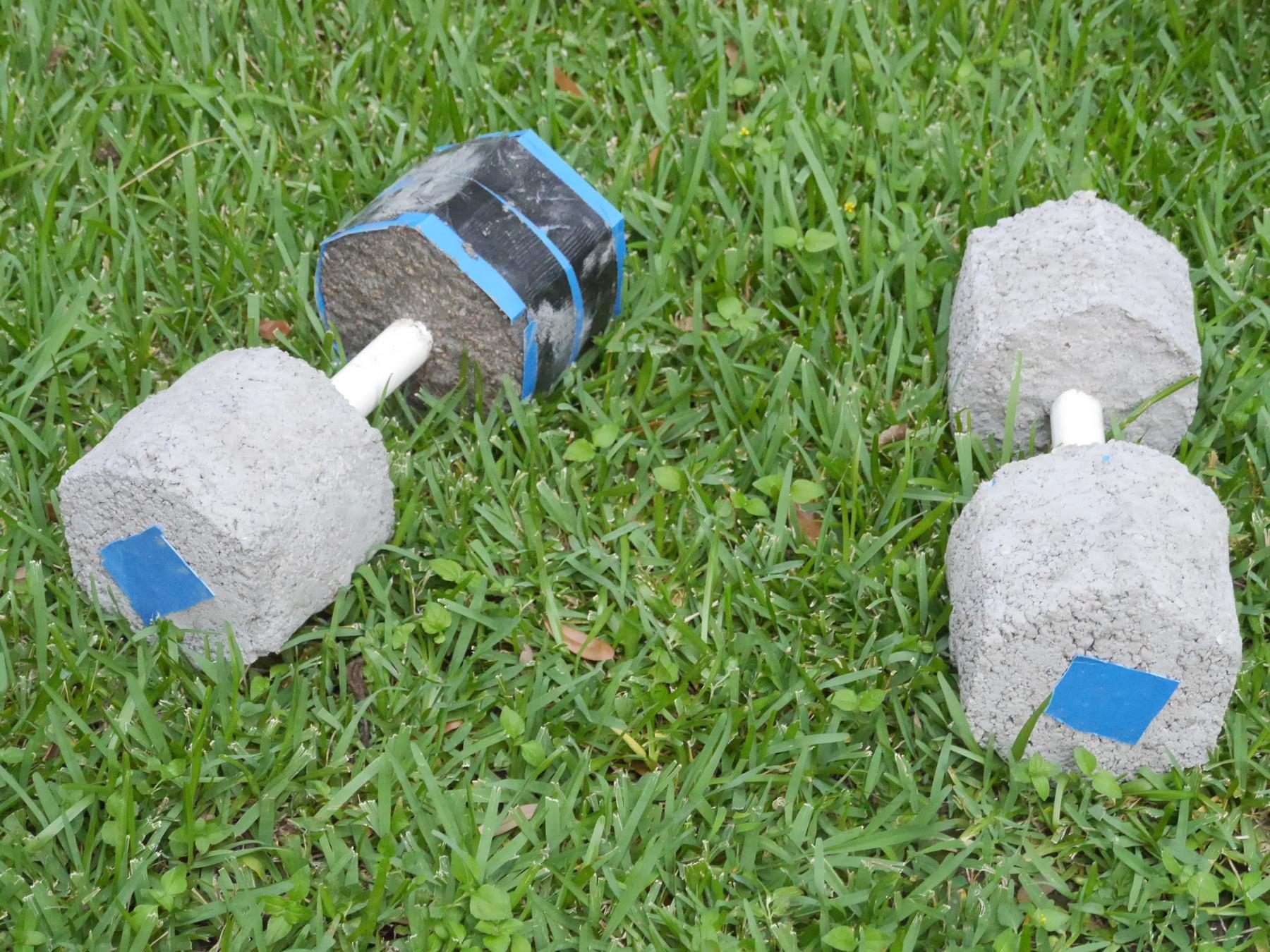
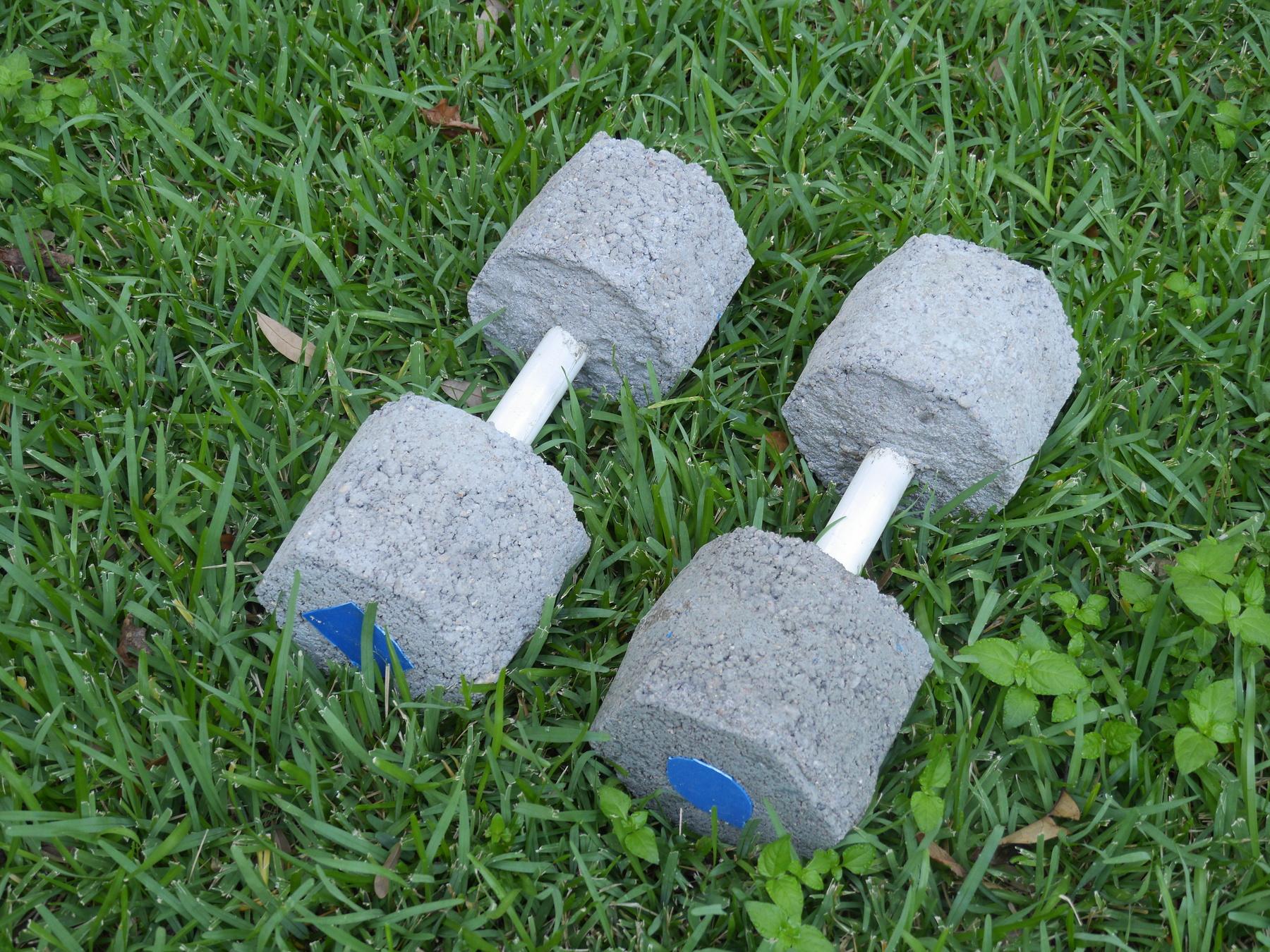
While the concrete is setting, you can be printing the second mold.
The second weight on the dumbbell is trickier, because you have to balance a heavy weight on top while adding concrete to the mold.
Make a jig like to hold the rod upside down. It was three pieces of scrap wood. In the top one, I drilled a hole the size of the rod and then cut towards it from the edge so the rod could fit. I was initially planning to clamp the rod to the jig, but friction turned out to be good enough.
Stand the dumbbell upright on the already set concrete weight. Glue the second mold onto the rod, making sure that (a) you first put in screws (I forgot that once and had to take it off and put them in) and (b) that the hexagon of the mold aligns well.
Once the glue is set, carefully balance the dumbbell on the empty mold in the jig. As before, measure out and mix concrete and water, and stuff it in.
Leave to set, remove from jig, peel mold (or leave) and use!
Of course, you'll probably want to make two. You can do that in parallel, or first make one and learn from your mistakes.
The concrete instructions in my mix said to keep it moist for the next couple of days.